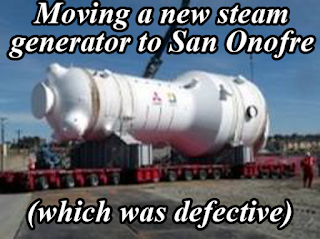To: kankyo@city.shimada.shizuoka.jp
To Whom It May Concern,
This letter is being sent in strong protest of your city's plan -- and all of Japan's plan -- to incinerate radioactive waste created by the nuclear disaster at the Fukushima-Daiichi power plant/waste dump.
Radioactive poisons have a linear, no lower threshold dose response according to the latest scientific studies, as well as the majority of studies for the last hundred years or so. Most of the human data is from Hiroshima and Nagasaki bomb studies, even 25 years after Chernobyl, but the effects of various carefully controlled doses on tens of millions of animals, of hundreds of species has also been observed, in tens of thousands of studies conducted by tens of thousands of researchers.
Many of the health effects from radiation are the same regardless of dose: Cancer, heart disease, etc. Their rate of occurrence varies with dose, but the severity of the effect does not vary with dose. (The severity of other health effects can be related to dose: Inflammation (at low doses), acute radiation sickness (at high doses), etc..)
From its onset, the nuclear industry made a promise to the public: Near-perfect isolation of their radioactive effluent from the environment for as long as necessary.
The promise has never been kept very well, but Fukushima literally blew the lid off the subject completely.
If you now burn the debris, radioactive particles which currently are isolated from humanity in the debris pile will be re-released into the environment. Some of these "radioactive elements will have very long half-lives, such as cesium-135 and Iodine-129. Some will have shorter half-lives, such as cesium-137 and strontium-90, both around 30 years. Additionally, plutonium, perhaps the deadliest substance on earth, will be re-released.
It's better to keep these awful reactor by-products of Fukushima's failures, these death-ray emitting radionuclides from the hell inside the reactor cores, well away from humans. So please don't burn the waste! It must all be stored -- for thousands of years. Reducing it to ashes and dumping the ashes in the sea is NOT a proper solution: It is exactly the opposite of what should be done, and doesn't in any way keep the nuclear industry's promise to the public. 99.99999% containment (or better) was promised. Energy "too cheap to meter" was promised. Advanced reactor designs were promised. Proper maintenance of the currently-operating reactors was also promised. None of this has been delivered. None of it ever will be.
Right now our local pair of nuclear reactors, San Onofre, is shut down because the replacement steam generators we purchased from Mitsubishi Heavy Industries, at a cost of approximately 1.4 billion USD, have turned out to be of sub-standard quality. Much of the blame lies with the owners of San Onofre, who "carefully" inspected these steam generators when they arrived, and found plenty to fix, and told the public they had fixed them properly and the steam generators would last for at least 30 years.
However, about 10% of the nearly 10,000 individual U-shaped tubes in the steam generators in one reactor are already showing excessive wear, and a steam generator in the other reactor suffered an unprecedented tube rupture, causing a reactor SCRAM, a release of radioactivity, and yet another extended shutdown. It could have been a lot worse: There could have been a cascading failure of the tubes, or the parts could have broken off and blocked valves or coolant flow through the reactor. Furthermore, the weakened tubes are liable to failure more easily than expected in the event of an earthquake. This is perhaps the most significant danger from the weakened tubes.
Perhaps you feel this is "not your problem" but please remember that just as Americans are being harmed by Fukushima Daiichi's poisons, if San Onofre ever melts down, the people of Japan will be breathing our poisons too. And many of the parts in our reactors were made in Japan, just as many of the parts of your failed reactors were made here. We are all in this together, and we are all responsible for our future.
There is no reason to risk these dangers. Cleaner alternatives exist, as many countries, including Japan, are beginning to recognize. The nuclear industry is based upon lies and must be stopped. It's main product is poison, which lasts for eons. It's byproduct is electricity, which is gone in an instant.
Please do not buy the nuclear industry's assurances that burning the waste is safe. For the sake of all living things, these poisons must be isolated, not spread around!
Sincerely,
Ace Hoffman, Concerned Citizen, Carlsbad, California USA
The writer is the author of THE CODE KILLERS, an expose of the nuclear industry, available for free download or online viewing at his web site: www.acehoffman.org. He notes that nearly 30 cities in Southern California are "sister cities" to cities in Japan, and these 30 cities contain approximately 1,000,000 inhabitants. Please think about where your radioactive ashes will land! On your brothers and sisters!
Lecture note: The author will be speaking at the Joyce Beers Community Center, San Diego, California, USA at 7:00 pm Monday, February 20, 2012.
Ace Hoffman
Carlsbad, California USA
Author, The Code Killers:
An Expose of the Nuclear Industry
Free download: acehoffman.org
Blog: acehoffman.blogspot.com
YouTube: youtube.com/user/AceHoffman
Email: ace [at] acehoffman.org









